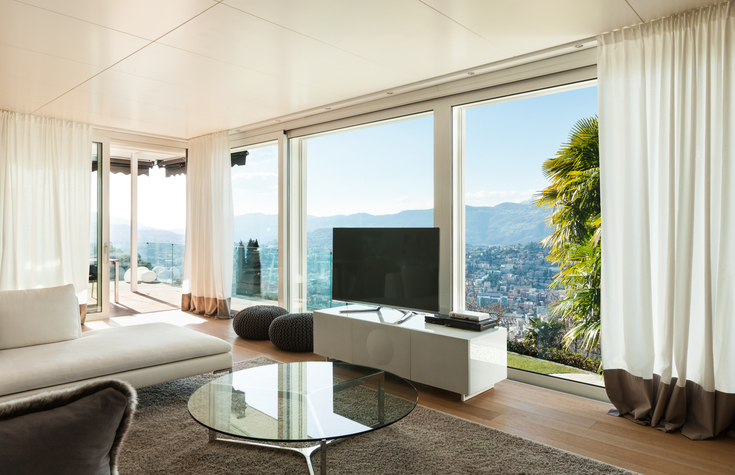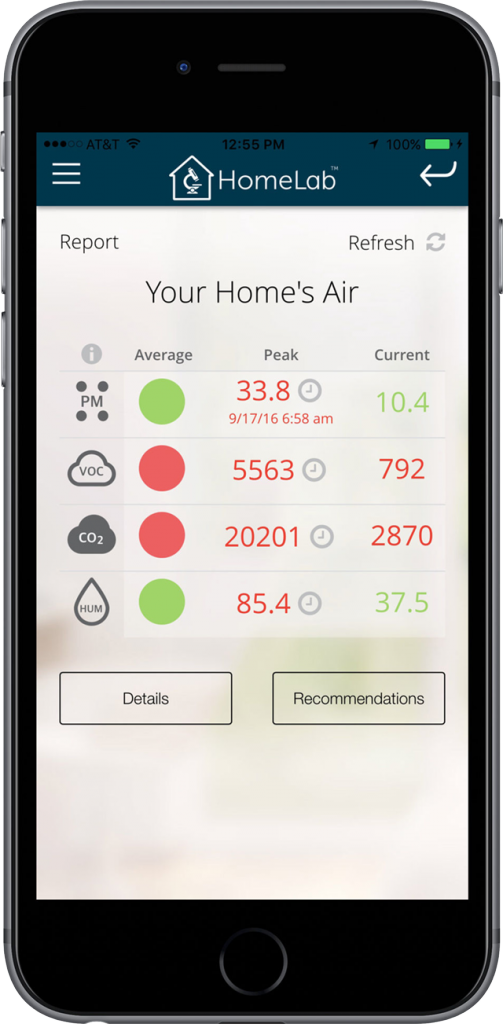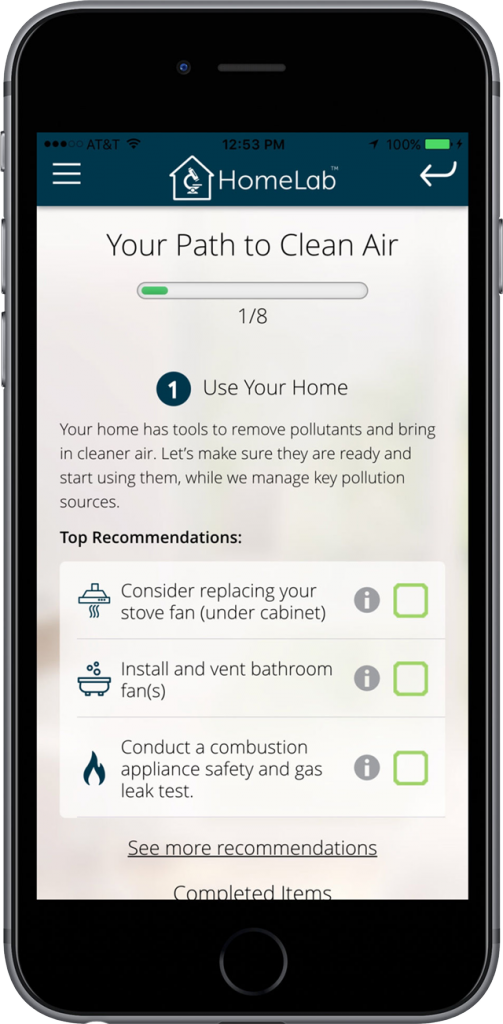Indoor air quality expert Nate Bellino believes people would be much healthier if they cleaned up the air inside their homes. And that’s exactly why he founded HomeLab, so that homeowners can easily identify sources of indoor air pollution, fix them, and then monitor and maintain that level of healthy, safe-to-breathe air. Here is his advice for keeping your home’s air as clean as possible.

Why is it so important for homeowners to focus on indoor air quality? Isn’t the air in our homes a lot cleaner than outside air?
When we hear “pollution” we mostly think of the outdoors, but it’s much worse inside. The EPA estimates that indoor air is 2-5 times more polluted than outdoor air. A recent study from George Washington University and Harvard found that 90% of homes contain toxic dust, which we inhale. We also spend 90% of our time indoors, so the air we breathe inside is impactful.
What kinds of health problems can occur if our indoor air quality is poor?
According to the EPA, particulate matter can cause aggravated asthma, increased respiratory symptoms, and an increased chance of heart-related illness. The World Health Organization attributes more than 6 million premature deaths each year to pollution worldwide. VOCs are known to cause eye, nose, and throat irritation, as well as headaches, nausea, and damage to the central nervous system—and some VOCs are known carcinogens. Of the toxins found in 90% of homes through the George Washington University and Harvard study, one was a known carcinogen and others caused hormonal disruption and impacted reproductive health.
What are the most common reasons why our indoor air isn’t as clean as it should be?
First, we bring in or use products that release VOCs. Some of these are everyday products that are easier to replace, but others are larger and harder to get rid of. Most people don’t buy a couch, TV, or dining table and think about what toxins they may be bringing into the home. Most don’t pick out cabinets with that in mind either, or pay attention to the sealants and adhesives a contractor is using. And you shouldn’t have to, but it has become increasingly important. We use over 60,000 chemicals in products—furniture, flooring, everyday items, and building materials that are all readily available—and only 2% have been tested for human safety.
Second, our homes may not be set up to remove pollutants easily, and there are certain activities that add to the problem. Few of us ventilate our homes as much as we should, or control how our homes breathe.

What are some surprising sources of pollutants that could create a problem with the air we breathe?
Cooking at home is a good thing, but it also burns fats and oils that are a significant source of pollution. Gas stoves are worse, although you still generate pollution with electric. Although stove fans are loud, it’s very important to use them.
Another surprise is scented products that are heated or burn, like candles. They seem harmless, but they produce soot and release VOCs.
Your company, Home Lab, says it’s important for homeowners to monitor the quality of their indoor air. Why?
We used to test homes for only a day or two. What we found is that different activities, different rooms, and different seasons all change the air quality in our homes. We see fine particulate matter (PM2.5) and volatile organic compounds as the vital reading of your home’s health that can change quickly. Having ongoing readings of your home vitals helps us understand how best to create a healthy home and pinpoint effective solutions.
What does a good monitoring program look like?
Monitors are a good start, but they only expose the problem. The important part is figuring out how to remove the toxins and pollutants you see. A complete healthy home program takes monitor data and information about the home to develop a plan on how best to remove pollution. Ideally, these recommendations are prioritized and you are able to immediately act on them right then and there. This way, you are taken from problem to solution and will start seeing improvement, rather than wondering what to do with the information.

Are our HVAC systems a source of indoor air pollution? Why would that be the case?
They could be. The average duct system leaks 20-40% of its air, potentially bringing pollutants found in the attic and crawlspaces into your home’s airways. What we would look for are particulate spike patterns that mimic an HVAC system turning on or off. Duct cleaning is an intuitive solution, but there is little evidence that it reduces pollutants in a living space. The EPA recommends duct cleaning only in limited situations and so do we. The best option is to seal your ducts to prevent pollution from entering in the first place. Before you do that, however, get a high efficiency HVAC filter, which is inexpensive and very effective at trapping particulates. This eliminates a potential issue where your HVAC system stirs up particulates and moves them throughout your home.
Do you have specific recommendations for maintaining our HVAC systems so they keep our air cleaner?
Your furnace burns fuel to heat your home. Any time you burn something, you create emissions such as CO, CO2, NO2 and other harmful gases. The best thing to do is to make sure these emissions are completely vented outside the home. There is a combustion safety test that determines whether or not any of your gas appliances—not just your HVAC—could be leaking emissions into your home. We realized that the fundamentals of this test are easy enough for someone to perform themselves with the right equipment and guidance, at a fraction of the cost of having someone come out. This allows homeowners to periodically check their appliance emissions on an ongoing basis.
While maintaining your HVAC makes sense and is often recommended, I have yet to find a good HVAC tune-up. They are more often used as lead generators for HVAC companies, looking for something wrong rather than optimizing your system’s performance. Our advice until something better comes along is to keep your system clean and focus on a using a good filter, sealing your ducts, and ensuring your emissions are staying out of your living space.
If someone is replacing their HVAC system, is there a better air quality filter to consider?
Most people can replace their filter at anytime. There is usually a 1″ filter on the return grill or at the base of the furnace. You may upgrade to a high efficiency filter and replace them every 3-4 months. This is also a great time to increase your level of filtration.
The amount and size of particulates your HVAC filter captures is related to its MERV rating. The higher the MERV, the more particulates of smaller size it catches. MERV 16 is equivalent to a HEPA filter. MERV 13 starts capturing a good amount of fine particulate matter that is unhealthy. While they make 1″ MERV 13 filters you can easily replace, they are so densely packed that it creates resistance for your furnace when it is trying to bring air in. Over time this can wear out your motor, and we have yet to find a 1″ MERV 13 filter that doesn’t pose this risk on average systems. But 4″ filters are spread out, allowing more air to pass through, creating less resistance and allowing you to increase your MERV rating. Switching to a 4″ filter after the system is installed is very expensive, but including it in a new system is simple.
Go for a MERV 13 or 14 when you replace your HVAC. HEPA filtration is also an option, however this is more expensive.
What about HEPA vacuum cleaners? Are they effective?
HEPA vacuums are better than regular vacuums, particularly those with sealed canisters. They are a very common recommendation that we used to make as well. No matter how much you vacuum and clean your carpet, it will continue to want to attract and retain particulates and dust mites and potentially offgas VOCs, giving you an uphill battle for a healthy home.
Any other suggestions for homeowners concerned about the air inside their homes?
I’d just encourage everyone to start the process. Life is busy, but this is crucial for your health—especially for kids. Just take a piece a month and start making progress. Before you know it, creating a healthy home will become part of your routine.
Source: Modernize
